|
America's Railroad Museum
by Bob
Brooke
As
the oldest railroad in the United States, it’s only fitting that the
Baltimore and Ohio (B&O) Railroad Museum be the one that represents the
history of railroading in America. And with all the esteem of this grand
old line, people would think that it had a grand beginning. But that
wasn’t so.
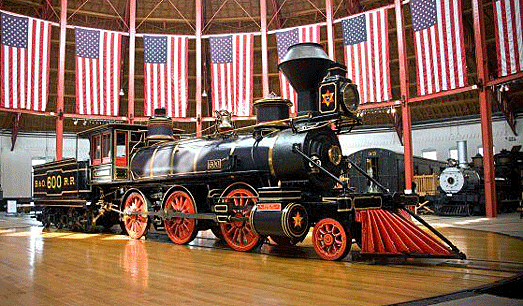
After it’s meager start, the B&O linked the City of Baltimore with
Tidewater Maryland and Wheeling, West Virginia. It was the first
commercial railway line, carrying passengers and cargo and even mail for
the U.S. Postal Service.
The Launch of the B&O Railroad Museum
The B&O Railroad Museum grew out of a trade show exhibit which survived
to become a "national treasure" of railroad artifacts. Today, it
comprises the Museum’s collection and is the oldest, most comprehensive
American railroad collection in the world.
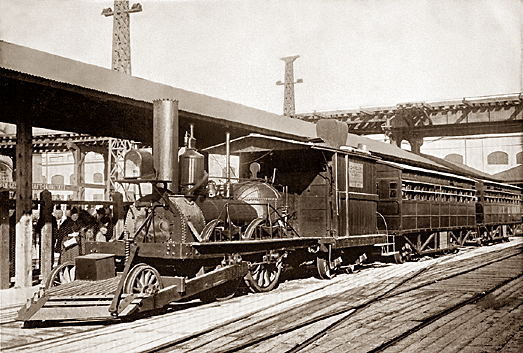
Located among Baltimore City's historic southwest neighborhoods, at the
original site of the historic Mt. Clare Shops where Baltimore
businessmen, surveyors, and engineers set about building the B&O
Railroad in 1829, laying the first commercial long-distance track, and
building the first passenger station.
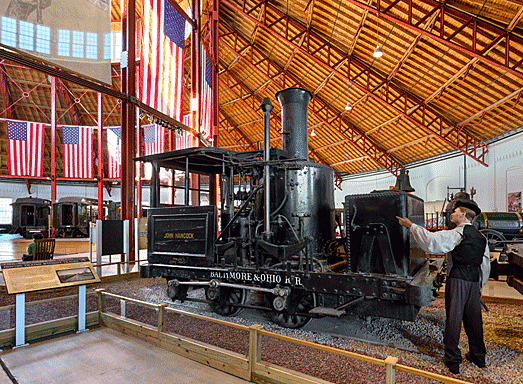
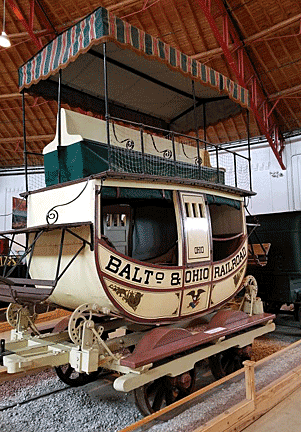 The
collection encompasses artifacts related to early American railroading,
particularly the Baltimore & Ohio, Chesapeake & Ohio, Western Maryland,
and other mid-Atlantic railroads. Nearly 200 locomotives and pieces of
rolling stock provide a look back at railroad technology from 1830
through the present day while hundreds of thousands of small artifacts
provide a unique glimpse of railroading through tools, exquisite
time-pieces, fine art, presentation silver, uniforms, furniture, and
personal memorabilia. Additionally, an extensive collection of scale
models and toy trains illustrate America's long fascination with trains
and railroading. And the grounds of the Museum encompass significant
historic structures, many of which are restored as well as bridges,
earthworks, and archaeological resources. The
collection encompasses artifacts related to early American railroading,
particularly the Baltimore & Ohio, Chesapeake & Ohio, Western Maryland,
and other mid-Atlantic railroads. Nearly 200 locomotives and pieces of
rolling stock provide a look back at railroad technology from 1830
through the present day while hundreds of thousands of small artifacts
provide a unique glimpse of railroading through tools, exquisite
time-pieces, fine art, presentation silver, uniforms, furniture, and
personal memorabilia. Additionally, an extensive collection of scale
models and toy trains illustrate America's long fascination with trains
and railroading. And the grounds of the Museum encompass significant
historic structures, many of which are restored as well as bridges,
earthworks, and archaeological resources.
But how did this all come about? The B&O became the first railroad to
hire a publicity agent. In 1880, it hired “Major” Joseph G. Pangborn, a
western newspaper publicist and showman, to market the railroad.
Pangborn saved a number of the B&O’s obsolete but historic locomotives
for an extensive exhibit planned for the World’s Columbian Exposition to
be held in Chicago in 1892 and 1893. In addition, he designed and built
a series of full-sized wooden replicas of the world’s pioneering
locomotives and mounted an exhibit documenting the continuum of railroad
history heretofore unmatched in size, completeness, and significance.
For its creative look backward in history, in the midst of a celebration
of “modern” technology, the B&O received the highest honors awarded.
Marshall Field requested that the railroad loan him the collection and
exhibit from the Exposition to be part of a new museum of technology
that he proposed. But the Field Museum elected to focus on natural
history, so the collection returned to the B&O.
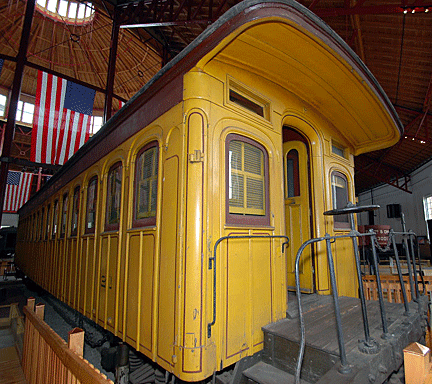 Panghorn
expanded and redeveloped the exhibits for the 1904 Louisiana Purchase
Exposition in St. Louis and, again, walked away with gold medals in
every category. After that exposition, the collection went to an unused
roundhouse in Martinsburg, West Virginia, to be stored. Panghorn
expanded and redeveloped the exhibits for the 1904 Louisiana Purchase
Exposition in St. Louis and, again, walked away with gold medals in
every category. After that exposition, the collection went to an unused
roundhouse in Martinsburg, West Virginia, to be stored.
When the passenger car department abandoned the magnificent roundhouse
at Mt. Clare, however, the Public Relations Department saw an
opportunity to consolidate all of its historic collections in one
location. The railroad opened the B&O Transportation Museum at Mt. Clare
on July 2, 1953.
The Museum’ houses an impressive collection of locomotives with many
unique examples of historically significant pieces from the B&O and
other Maryland railroads and includes the finest collection of 19th
century steam locomotives. The Museum’s roster of locomotives and
rolling stock represent the first, last, best or only of their kind in
existence today.
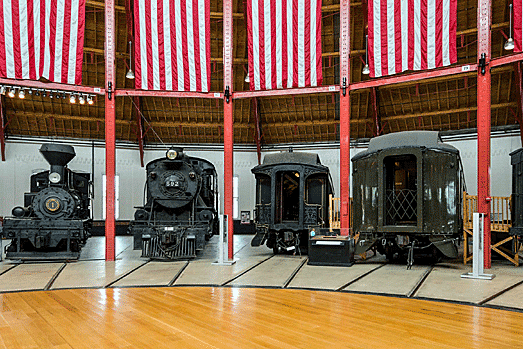
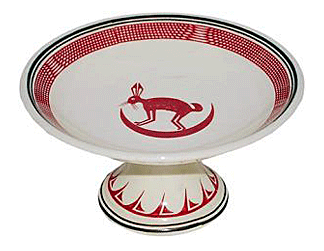 The
small objects collection covers almost every facet of railroading and
includes clocks, pocket watches, textiles, lanterns, dining car china,
silver, fine art, communication devices, signals, shop equipment, and an
assortment tools and artifacts used on historic occasions such as the
laying of the B&O’s ceremonial First Stone on July 4, 1828, which marked
the beginning of construction of America’s first railroad. The
small objects collection covers almost every facet of railroading and
includes clocks, pocket watches, textiles, lanterns, dining car china,
silver, fine art, communication devices, signals, shop equipment, and an
assortment tools and artifacts used on historic occasions such as the
laying of the B&O’s ceremonial First Stone on July 4, 1828, which marked
the beginning of construction of America’s first railroad.
Today, the Museum covers a 40-acre site.
Dating from the beginning of American railroading, the collection
contains locomotives and rolling stock, historic buildings, and small
objects that document the impact of the Baltimore & Ohio Railroad (B&O)
on the growth and development of early railroading and cover almost
every aspect of an industry that left a permanent mark on the folklore
and culture of America.
The
Roundhouse
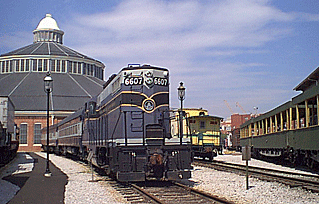 The
centerpiece of the museum’s collection is the Roundhouse. Noted
architect, E. Francis Baldwin had originally designed the Mt. Clare
Roundhouse as a passenger car repair and maintenance shop. Fully
enclosed, it was the largest circular industrial building in the world
when completed covering more than an acre of ground and rising 125 feet
into the air. The
centerpiece of the museum’s collection is the Roundhouse. Noted
architect, E. Francis Baldwin had originally designed the Mt. Clare
Roundhouse as a passenger car repair and maintenance shop. Fully
enclosed, it was the largest circular industrial building in the world
when completed covering more than an acre of ground and rising 125 feet
into the air.
Completed
by the B&O in 1884 at a cost of $100,471.97, this 22 sided structure is
245' in diameter, 135' high and contains almost 1 acre beneath its slate
roof. Built of wrought-iron, brick, wood, and slate, it contained 22
bays, a turntable, and three rows of windows that allowed the maximum
amount of natural light to illuminate the building.
In the middle of the Roundhouse is the 60' turntable which the railroad
used to position passenger cars in an available bay for necessary
repairs and maintenance work. By the 1920s passenger cars became
increasingly longer and the Roundhouse's usefulness was limited due to
the small size of the turntable. Subsequently, the B&O used the building
less and less.
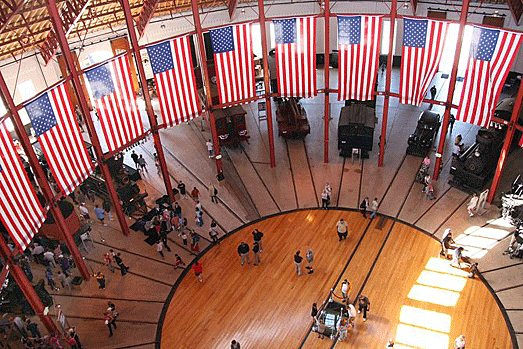
Disaster struck the museum in February 2003 when half of the gigantic
roof over the roundhouse collapsed from the weight of a record snowfall,
damaging numerous priceless historic locomotives and rolling stock.
During reconstruction, the museum returned the interior of the building
to its 1884 appearance. Today, the Roundhouse contains exhibits and the
most significant collection of 19th century railroad equipment in the
world. The museum staff uses the functional turntable to demonstrate how
railcars were turned when the building was in use.
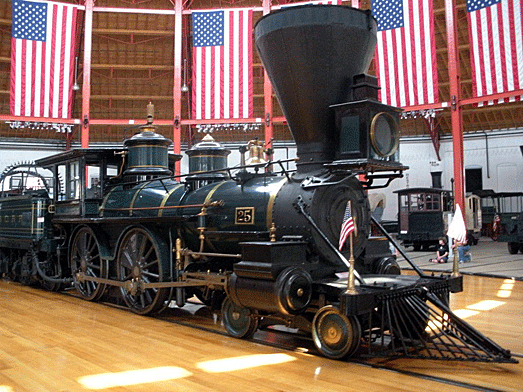
Small Objects and Artifacts
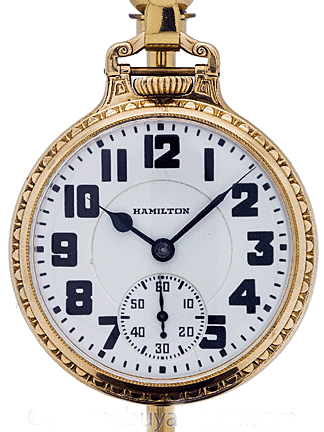 In addition to the significant collection of locomotives and train cars,
the Museum also contains over 6,000 small objects. The collection covers
almost every facet of railroading and includes clocks, pocket watches,
textiles, lanterns, dining car china, silver, fine art, communication
devices, signals, shop equipment, and an assortment tools and artifacts
used on historic occasions, such as the laying of the B&O’s ceremonial
First Stone on July 4, 1828, which marked the beginning of construction
of America’s first railroad.
In addition to the significant collection of locomotives and train cars,
the Museum also contains over 6,000 small objects. The collection covers
almost every facet of railroading and includes clocks, pocket watches,
textiles, lanterns, dining car china, silver, fine art, communication
devices, signals, shop equipment, and an assortment tools and artifacts
used on historic occasions, such as the laying of the B&O’s ceremonial
First Stone on July 4, 1828, which marked the beginning of construction
of America’s first railroad.
Precision timekeeping and accurate schedules were essential to the safe
and efficient operation of railroads. Variations or inaccuracies could
literally be the difference between life and death. Learn the important
role the railroads played in standardizing how we tell time. Exhibited
are unique clocks and pocket watches used by the B&O Railroad and its
employees.
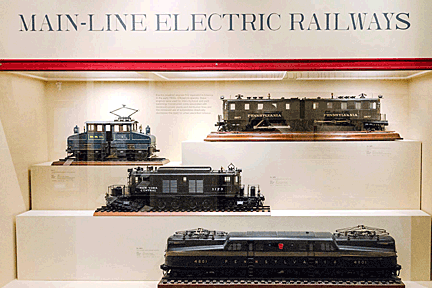 And
last, but not least, the Museum features an exhibition of the
Smithsonian Institution’s Collection of Railroad Models: This exhibition
features a comprehensive collection of models depicting the history of
locomotive and rolling stock technology originally displayed in the
Smithsonian Institution’s Museum of History and Technology (currently
the National Museum of American History). The exhibit was the brainchild
of transportation curator John H. White. White gathered, in model form,
examples of locomotives and cars that represented significant
advancements in railroad technology. The models in the exhibit are
considered by many to be the finest examples of railroad scale models
ever produced. And
last, but not least, the Museum features an exhibition of the
Smithsonian Institution’s Collection of Railroad Models: This exhibition
features a comprehensive collection of models depicting the history of
locomotive and rolling stock technology originally displayed in the
Smithsonian Institution’s Museum of History and Technology (currently
the National Museum of American History). The exhibit was the brainchild
of transportation curator John H. White. White gathered, in model form,
examples of locomotives and cars that represented significant
advancements in railroad technology. The models in the exhibit are
considered by many to be the finest examples of railroad scale models
ever produced.
<
Back to More Antiques to View
Next Article > |
